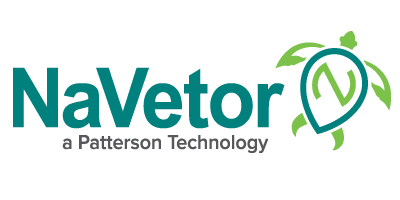Accurate medical records are an important part of running any successful veterinary practice. They not only keep the staff organized and updated, but also help ensure that veterinarians get a complete picture of each patient’s status and history to make well-informed decisions regarding future treatments. Yet, with packed days and crunched exam times, veterinarians often don’t have enough time to properly complete them, resulting in inaccuracies and difficulty making decisions.
Fortunately, your veterinary practice management software can help standardize the entire process, making it easier for staff and practitioners. In fact, it can even offer tips and tricks to speed things up, so that anyone looking at an electronic medical record can quickly understand what has occurred … and what needs to be done next.
We find that the following three software tips are particularly helpful with medical records:
Adding and Annotating Images
We already know we can store radiograph images in the patient record. But sometimes, it also helps to take a photo of a patient’s injury or condition and store that image in there. And it’s even more effective to add notes directly to that image. This can all be done within the software, conveying an immense amount of information with one quick glance.
Here is how the process works in NaVetor:
- Using the patient record on the NaVetor app, take a photo of a patient with a mobile phone. The patient’s image will automatically appear in the medical record. If you’re working from a desktop or laptop, simply take the photo and then upload it to the patient record.
- Once imported, click on the image, and use the View/Edit Photo tool to annotate, identifying anything worth noting about the condition.
- In the patient record, there is also an area to capture overall notes next to the image, avoiding the need to enlarge the image to gather important information.
- To search for specific notes in a patient record, click on “Notes” and search for treatments or other criteria—a great way to get some extra minutes of your day back.
This process is particularly helpful if different practitioners are examining the patient images at different times. They can look at the image and its notes to better understand the original injury and other circumstances surrounding the visit.
For example, if a veterinarian examined a patient who had been in previously for an injury and the client had declined treatment recommendations, but it had not been noted, it would be as if they were starting from scratch. To avoid this, always encourage staff to note previous discussions with clients, including if they had declined recommended treatments.
Using Templates to Your Advantage
Many veterinary software platforms offer a templated approach to completing the patient record during an exam. However, not all practices want to use templates in the medical record, despite their convenience. In NaVetor, you can select any templates that you want to routinely use in patient records, or you can prevent all templates from automatically loading—it’s your choice.
Even when templates are not pre-loaded based on settings, you can still pull in a specific template in a patient record. Click the “Apply” button and select the template from the drop-down menu. This won’t affect previous SOAP encounters—just the SOAP you are working on at that time. You can also consider using templates specific for your practice, helping to speed up exam time and create consistency.
Speaking of templates, another great time saver when filling out medical records is voice dictation, or the ability to speak your notes into the medical record rather than typing them. That can cut your documentation time in half! NaVetor veterinary software happens to integrate with Talkatoo dictation software for super-fast and highly accurate speech-to-text notes that may help you save a few hours each day.
Easily Locate Patients that Have Received Specific Treatments
Sometimes, you need to find all patients within a certain time period that had a procedure done or used a specific type of medication—to alert for recalls, to follow up with important reminders, or to convey various other messages. And different software platforms have ways to search.
In NaVetor, for example, searched data can be found using the Productivity by Item Report:
- In that screen, you can search by inventory, procedure, or lab test. You can also check the “Client/Patient Info” box so that the report will contain information for all patients that received that product or procedure.
- You’ll also have the ability to adjust the date range to focus only on a certain window of time.
- Once you perform the search, you’ll have a Productivity by Item Report that shows every patient that received that particular item or treatment, as well as client information. You’ll be able to see the date when the procedure was performed and any medication or inventory items that were used.
At the end of the day, electronic medical records are all about increasing efficiency and productivity for your busy veterinary practice, while ensuring the best care possible for your patients. NaVetor simply makes life easier, so that your data and practice are as healthy as your patients. Need a practice health check? Request a demo and check us out!
Request a Demo
Inspired by what you’ve seen? Interested in seeing how NaVetor can work in your practice? Contact us to set up a personalized demonstration of the software.
Sales: 833-628-3867

